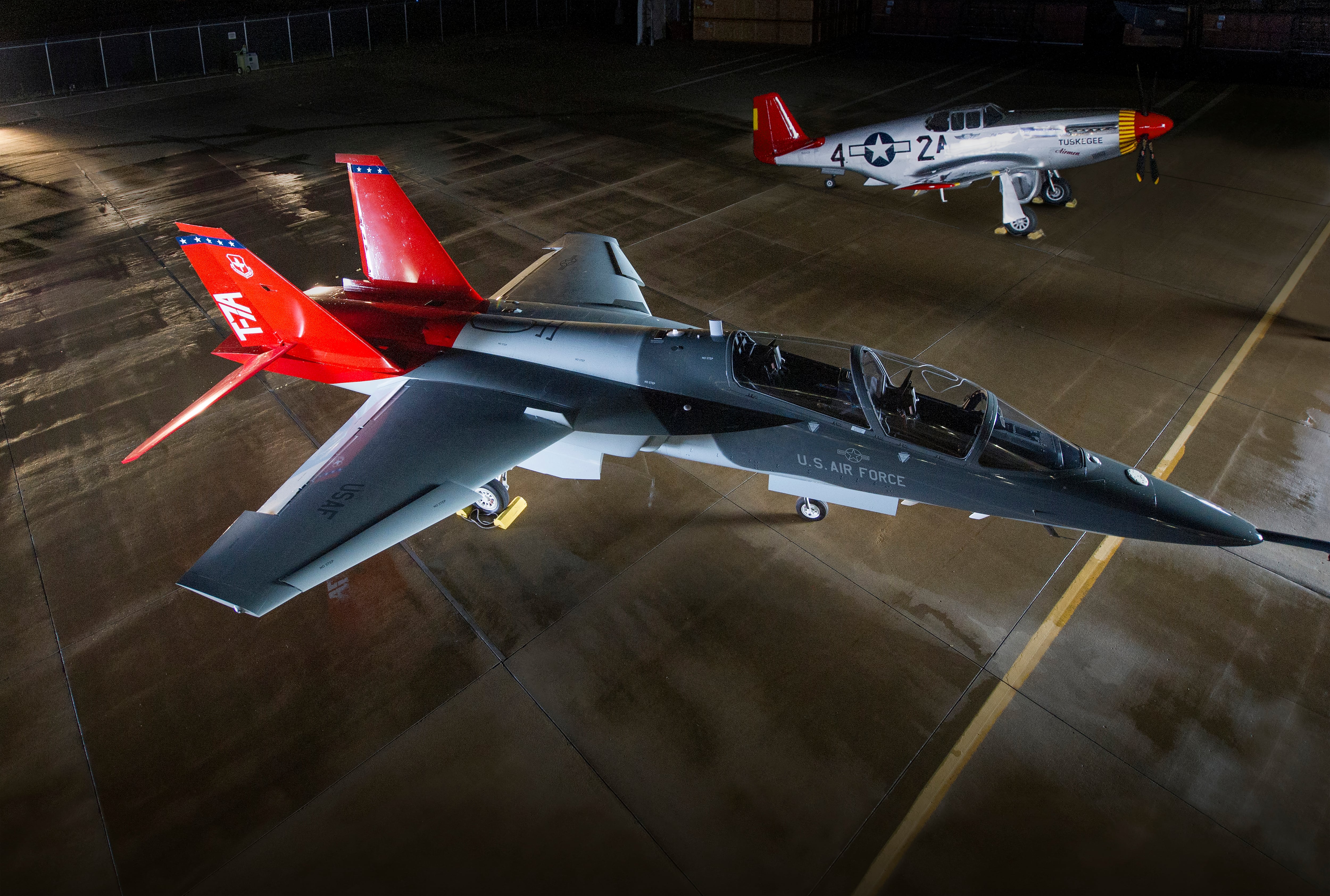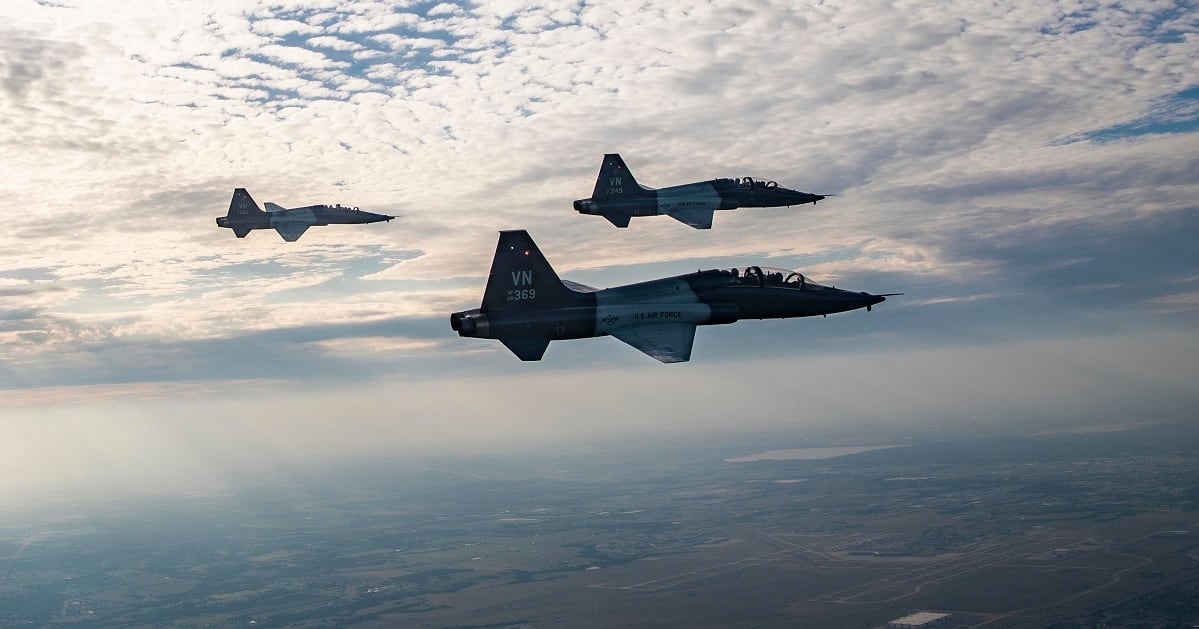Air Combat Command is developing a new training framework for creating fighter pilots that it hopes could shave up to a year and a half off the existing process.
The Reforge program, short for Rebuilding the Forge, hopes to use the new T-7 Red Hawk trainer, advanced technology such as virtual reality and artificial intelligence, and a reorganized system of training to overhaul the fighter pilot training pipeline.
The current system is more than six decades old, and the process remains largely unchanged from the end of the Korean War, according to a concept of operations document signed June 2 by Gen. Mike Holmes, the head of ACC. Air Force Magazine was the first to report on the Reforge concept. ACC provided the document at Air Force Times’ request.
Today, the Air Force fighter pilot community is straining under the pressure of multiple challenges. The Air Force has been regularly flying combat missions, in one form or another, since the Gulf War began 29 years ago, stressing the pilot population.
The Air Force also has struggled to retain fighter pilots (and other pilots), in part because the deep-pocketed airline industry has embarked on a hiring spree.
Fighter pilot training has also deteriorated, both in quantity and quality, with developing pilots flying fewer hours in realistic training environments than their counterparts two decades ago, according to Air Force officials..
The service hasn’t been producing enough new fighter pilots to replace those ranks, leading to a shortfall that has brought the service to a “flash point,” the document said.
“We are not making new fighter pilots fast enough and we are not retaining enough of those we do make in the force,” the Reforge concept of operations said.
Currently, it takes about 40 months to fully develop a pilot, from undergraduate pilot training until they are qualified as a mission-ready flight lead, capable of leading one or more wingmen into battle or navigating with them. The new Reforge concept — which takes a cue from the post-Vietnam War “Forge” revision to tactical training — seeks to to cut 12 to 18 months from that time, to as low as 22 months.
Right now, fighter pilots have multiple phases of training. First, a pilot goes through several stages of undergraduate pilot training, or UPT, in which he or she learns the basics of flying in a T-6 aircraft. The aspiring fighter pilot then moves on to a specialized Introduction to Fighter Fundamentals, or IFF, course, where they fly the T-38 jet trainer. After that, they move on to their formal training unit, where they learn the basic tactical skills needed in their assigned fighter, and then move on to their fighter squadron, where they qualify in their squadron’s combat mission and become a mission-ready wingman.
But that system results in several permanent change-of-station moves, and dramatic increases in complexity as they first move to their formal training unit, and then on to their operational squadron.
RELATED

So ACC hopes to fold three training courses – the third phase of UPT, IFF and the basic formal training unit into one 12-month Initial Tactical Training program.
This ITT program, which is to include technology such as augmented or virtual reality and artificial intelligence, would teach pilots who have just received their wings the fundamental skills they need for their fighters, as well as specific tactics, techniques and procedures necessary for their weapon system. They would learn these skills before moving on to the FTU transition course, instead of the basic FTU course, ACC’s document said. Having new pilots attend one ITT program instead of multiple programs would only mean one PCS move, increasing personal and professional stability, ACC said, and reduce breaks in training.
Each ITT program would specialize in a particular weapon system, ACC said in the Reforge document, and could be structured as a squadron assigned to a combat wing.

“This will provide the new pilots with the stability to learn, become experienced and mission-ready at their first combat-assigned wing,” the Reforge document said. “This will provide the CAF [Combat Air Force] squadrons the ability to assess the fighter training of their new pilots in real time, provide the flexibility for the CAF squadrons to absorb or pull ITT graduate[s] on demand, and provide additional adversary training.”
The advanced technology — similar to that which Air Education and Training Command has developed as part of its Pilot Training Next program — is not meant to reduce sorties or flying time, ACC said, but would instead eliminate training gaps and minimize the repetition of basic skills to make for improved and more efficient training.
The incoming T-7A Red Hawk jet trainer, which will replace the aging T-38 Talon, will also help improve tactical fighter pilot training, the Reforge proposal said.
The T-38′s capabilities are outdated and irrelevant when compared to the advanced technologies of modern fighter aircraft, ACC said. This worsens the leap in complexity when a pilot jumps from learning in the Talon to his fighter when he moves to the formal training unit, ACC said.
“The time required to build situational awareness … has compressed further and requires faster thought processes through training,” the Reforge document said. “These skills cannot be taught or experienced in a 2nd generation trainer [such as the T-38]. Aviators do not mature their tactical skills until they start flying a 4th [generation] plus or 5th generation fighter.”
The T-7, on the other hand, will be an advanced trainer that can emulate the same sensors and systems used by modern fighter aircraft, the Reforge document said.
But while the T-7 will be a good trainer, ACC cautioned, it’s unknown whether its configuration will be enough to meet the needs of fighter training, or if it will need to be modified.
However, the T-7 is still a long way from becoming reality, with full operational capability not expected until 2034.
In the meantime, Holmes said Monday in an online discussion with the Mitchell Institute for Aerospace Studies, ACC has proposed leasing some airplanes while it waits for the T-7 to arrive. ACC, working with AETC, will use these leased airplanes to figure out the most effective way to use the T-7 to produce experienced pilots more efficiently, Holmes said.
ACC is starting with a proof of concept for Reforge. The proof of concept should be awarded by the end of fiscal 2020, ACC spokeswoman Alexandria Worley said in an email, and is expected to be finished in a little less than five years.
But the location of the test, and how many people will be involved, has not yet been decided.
The command is also working on a commercial services offering as a way to rebuild fighter training —so fighter pilots can be developed into a flight lead for combat air forces faster than the pipeline currently allows — and develop a system using technology to improve training for combat air forces pilots.
ACC’s Reforge team has been talking with AETC’s Pilot Training Next program, ACC said, though they are separate efforts.
“This allows both teams to share lessons learned and best practices, as well as ensure the ACC and AETC efforts sync up as part of a potential enterprise-wide way ahead,” ACC said.
ACC is still figuring out how the Reforge program’s simulations will work, and what kind of augmented or virtual reality technology will be used during the proof of concept test.
Stephen Losey is the air warfare reporter for Defense News. He previously covered leadership and personnel issues at Air Force Times, and the Pentagon, special operations and air warfare at Military.com. He has traveled to the Middle East to cover U.S. Air Force operations.




